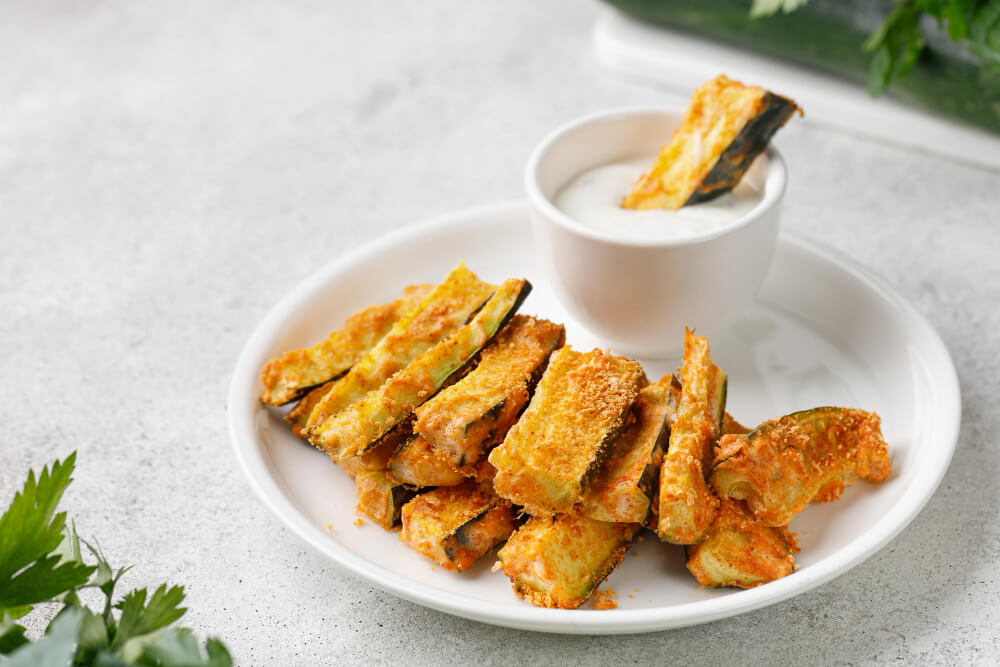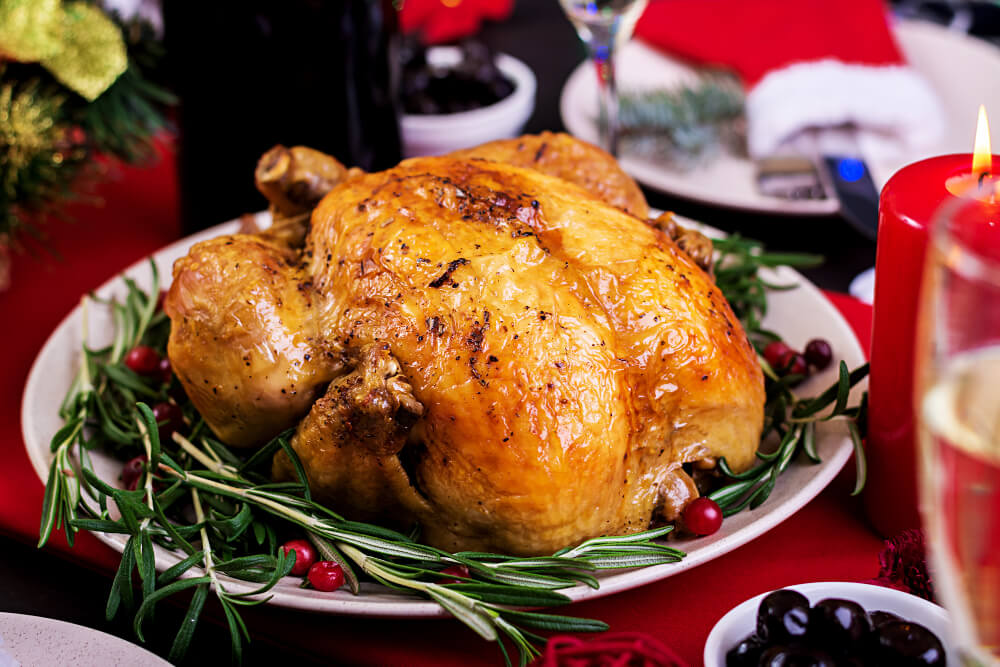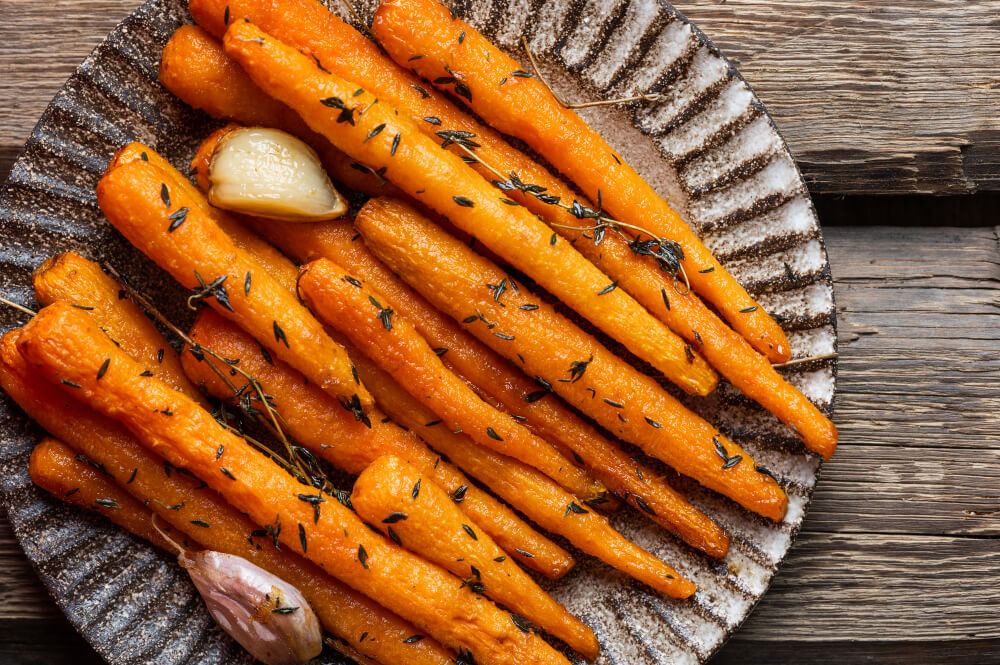
Regularly oiling your cutting boards is crucial to prevent them from becoming dull, cracked, or warped. However, with so many different opinions and conflicting advice, it's important to know what is the best oil for wood cutting boards. Not all oils are safe to use for treating a cutting board, as some commonly used oils can spoil over time and leave behind a rancid smell and flavor. If a cutting board smells rancid, it is not safe to use, as the rancid food oils can cause food poisoning.
CHOOSING CUTTING BOARD OIL – WHAT YOU SHOULD KNOW FIRST
AVOID OILS THAT TURN RANCID
It's important to know that some oils contain unsaturated and polyunsaturated fats, which remain in a liquid state at room temperature. However, these oils can release unpleasant odors and flavors when exposed to air, light, or moisture.
This happens because unsaturated fats contain two or more carbon bonds that can break up when they combine with oxygen in the air, a process known as oxidation. Once these oils undergo oxidation, they can turn rancid and emit a foul smell. To prevent this from happening, it's best to choose oils with a lower number of unsaturated fats and to store them in a cool, dry place away from light and air.
IS IT FOOD-GRADE QUALITY?
When selecting an oil to use on a cutting board, it's important to consider that any oil applied to the board will seep into the food you cut on it. Therefore, it's crucial to choose the ones that are free from poisonous impurities.
One type of oil that is safe to use on cutting boards is food-grade type, also marked USPS. These oils are made using non-toxic and safe ingredients, and are refined to remove any impurities. As a result, they are odorless, tasteless, and colorless, making them a great choice for use on wooden boards.
Some examples of food-grade oils that are safe to use on wood boards include mineral oil, MCT coconut oil, beeswax,
NON-DRYING VS. DRYING OILS
Oils can fall into two broad categories: oils that harden (drying oils) and oils that stay liquid at room temperature (non-drying oils).
Drying oils thicken and harden to form a surface coating at room temperatures. Once applied on a surface, they form a firm, durable finish.
In contrast, non-drying oils remain in a liquid-like state. Because they don't harden when left exposed to air, you can clean off non-drying oils using soap and water. Also, non-drying oils are best suited for treatment purposes. These oils are food-safe after passing the distillation process. Hence, they are safe for treating kitchen cutlery, countertops, and even cutting boards.
But non-drying oils need frequent re-application because they don’t form a long-lasting coating.
Examples of non-drying oils include Mineral oil and MCT coconut oil.
BEST CUTTING BOARD OILS: SAFE AND RECOMMENDED OILS
The following oils are safe to use on your wooden boards:
FOOD-GRADE MINERAL OIL
You can safely use food grade mineral oil on your wooden boards. This type of mineral oil is highly recommended for this purpose.
This oil is derived from distilled petroleum and is also known as white mineral oil or liquid paraffin.
During the distillation process, various contaminants are extracted to create different grades of mineral oil.
MINERAL OIL IS THE BEST FOR OILING A CUTTING BOARD FOR THESE REASONS:
-
It's food-safe,odorless, colorless, and flavorless. Because it's food safe and free from impurities, it will not contaminate your food once used to treat your boards.
-
It's resistant to oxidation. Mineral oil is highly resistant to rancidity, unlike vegetable ones that smell, become sticky, and even spoil once exposed to air, moisture, light, or heat.
-
It's non-drying oil resistant to water absorption. Mineral oil will not polymerize when left exposed to air. Instead, it forms a water-proof, plastic-like film once applied on the surface. Because it does not solidify (it remains in a liquid-like state), it can penetrate deep into the wood, saturating the fibers. Treating wood with mineral oil moisturizes the wood fibers, ensuring the board doesn't crack or warp. The water-proof finish keeps liquids out.
- It restores the natural look of wood. Treating wood with mineral oil restores its natural, shiny luster.
Not all varieties of mineral oil obtained from crude oil are safe for treating wood boards. The low-quality type can be toxic and loaded with impurities. But top-quality, cutting board oil is food-safe certified and non-harmful for indirect contact with food.
BEESWAX
If your board has lost its natural, shiny luster – oiling it with cutting board oil and then sealing with beeswax paste will restore its rich-brown hue. Beeswax is natural wax, extracted from honeycombs.
It’s food-safe, stable, and has antimicrobial effects against a variety of bacteria. It’s a popular choice for many people because it permeates and moisturizes the wood, giving it a shiny, silky-smooth sheen.
Natural beeswax penetrates the wood deeper than most finishes used to preserve wood. It can penetrate up to ¼ inch of a dry piece of wood when left overnight.
Once beeswax has moisturized the wood and solidified, it seals the wood with a water-proof coating that repels moisture, grime and dirt. But, this water-proof protection needs reapplication because it wears out with time. Once a month is a good routine to re-apply the oil.
FRACTIONATED COCONUT OIL (MCT OIL)
fractionated coconut oil (a.k.a MCT oil) is safe and a good choice for cutting boards. Although it comes from regular coconut oil, MCT oil is different from ordinary coconut oil. The two differ in fatty acid composition.
Coconut oil is mainly composed of saturated fatty acids – up to 90%. Of these fatty acids, up to 65 – 70% are short and medium-chain fatty acids. The rest is long-chain fatty acids.
In fractionated coconut oil, the long-chain triglycerides (LCTs) are eliminated through a process referred to as ‘fractionation,’ leaving only Medium-chain triglycerides (MCTs).
Fractionation is a distillation process that separates LCTs from MCTs.
Once LCTs are removed, it leaves oil that’s odorless, colorless, and food-safe. This oil is 100% pure and is commonly known as ‘MCT oil’ or ‘fractionated coconut oil.’
Note: Regular coconut oil itself is better to be avoided.
Regular coconut oil is resistant to rancidity – because of its high levels of saturated fats and low content of unsaturated fatty acids – but eventually, it turns rancid.
MEVELL’S CUTTING BOARD OIL AND CONDITIONER (OUR BEST RECOMMENDATION)
Give your cutting boards’ wood grain a natural hue and keep them from dulling, cracking, and warping with Mevell’s cutting board oil and conditioner.
Combined, our cutting board oil hydrates and seals the wood from the inside while the conditioner provides a protective finish that traps out liquids and food particles.
Given its low viscosity and a high absorption effect, the oil penetrates deeper and faster in the wood cells than competitor alternatives.
The mineral oil is food-grade quality – FDA and NSF certified. Also, it’s non-toxic and has no additives or allergens from nuts or gluten. You can use it for seasoning all wooden utensils, not just cutting boards.
The conditioner is made from two ingredients: Food-grade mineral oil + Natural beeswax.
Plus, because our conditioner has a cream-like consistency – It's easy to apply it on the your board.
OILS TO USE WITH CAUTION
The following oils are safe for treating wood boards, but you should use them with caution if you go with these options because they eventually can turn rancid.
LINSEED OIL
Linseed oil is a natural oil from flaxseeds used for wood finishes and as a nutritional supplement. Raw linseed oil can be used for wood chopping. It dries slowly, creates a flexible, waterproof seal, and is food-safe. However, it requires more applications, may take months to dry, and can go rancid and lighten the wood's natural color. Boiled linseed oil dries faster but contains toxic chemicals and is inedible. Stand oil is a heated, modified version of linseed oil.
WALNUT OIL .
This oil is generally safe for use on cutting boards. It is a food-grade oil that is safe for consumption and does not contain toxic additives. In fact, this oil is quite a popular choice for use on wooden boards and other kitchen utensils, as it is a drying oil that hardens and polymerizes to form a durable protective coating on the wood surface.
However, it's important to note that people with nut allergies should avoid using
Note: raw
TUNG OIL.
Tung oil is a drying oil extracted from nuts (seeds) of the tung tree. It's a popular choice for woodworkers as it brings out a satin look with a blend of slight golden tint. Once it soaks into the wood's pores, it cures to form a solid film that gels with the wood from the inside. Also, it's resistant to rancidity, unlike many cooking oils.
Regardless, it's not the best choice for oiling a cutting board. The knife will slice through the waterproof finish, allowing moisture inside the wood cells.
Also NOTE: "Tung oil" is a generic name referring to paint and varnish products that could have toxic elements. In reality, Tung oil paint and varnish have small tung oil traces. If you opt for Tung oil, go for food-grade, 100% pure tung oil – it's food safe once it cures.
Also, food-grade tung oil is pressed from the nut of the tree. It might not be a favorable alternative if you're allergic to nuts.
OILS TO AVOID COMPLETELY
All vegetable oils will go rancid after undergoing oxidation. Furthermore, once vegetable oils turn rancid, they give off unpleasant flavors and smells.
Oils that come in contact with your cutting board should be highly or100% resistant to rancidity. That way, your board will not leach smells into your foods or cause food poisoning.
Here are several vegetable oils to avoid:
- Soybean oil.
- Sunflower oil.
- Flaxseed oil.
- Corn oil.
- Cottonseed oil.
- Grapeseed oil.
- Olive oil.
- Rapeseed oil.
- Sesame oil.
VARNISH
Varnish is a finish. Never use varnish to preserve your chopping boards or butcher blocks or other wooden utensils in your kitchen. It can chip off and contaminate your food.
FREQUENTLY ASKED QUESTIONS
WHAT IS THE BEST OIL FOR WOODEN CUTTING BOARDS?
Food-grade mineral oil, combined with beeswax, is the most effective combination for treating and enhancing wood's natural look.
WHAT IS FOOD-GRADE MINERAL OIL?
Its a highly distiled mineral oil, also called liquid paraffin, it's refined from crude oil. It's scentless, tasteless, and transparent. Being food-safe, it's the best choice for oiling a cutting wood board.
CAN I USE OLIVE OIL TO TREAT MY CUTTING BOARD?
No! Avoid olive oil and other cooking oils -- they go rancid.
CAN I USE LINSEED OIL ON MY CUTTING BOARDS?
Yes – but go for raw linseed oil. It's non-toxic and food-safe. Avoid boiled linseed oil -- it can contain impurities.
CAN I USE COCONUT OIL ON MY CUTTING BOARD?
Only go for 100% MCT coconut oil. It's food-safe and effective.
HOW DO YOU OIL A WOODEN CUTTING BOARD?
Oiling a cutting wood board is relatively easy. First, oil both sides of the board, spreading the oil 2-3 times until the board is soaking wet with oil. Next, wipe the excess with a paper towel or better, leave the board to absorb the oil overnight or.
CUTTING BOARD OIL VS. CUTTING BOARD CONDITIONER – WHAT IS THE DIFFERENCE?
The conditioner uses beeswax as a natural ingredient, adding a waterproof finish and an attractive sheen. Cutting board oil penetrates and hydrates the wood – it acts as the base for the conditioner. You apply the conditioner after oiling the board with oil.
IS CUTTING BOARD OIL OR WAX BETTER?
Oil is a good option because it penetrates and seals the wood's pores, providing a protective finish that prevents liquids from getting in. On the other hand, wax is an additional step that creates a waterproof layer on top, providing an extra layer of protection. Additionally, wax helps to seal in the oil and prevent liquids from penetrating the board.
IS IT POSSIBLE TO APPLY TOO MUCH OIL TO A CUTTING BOARD?
Yes, over-saturating the cutting board with oil can lead to the excess oil dripping out of the board. This can happen if you soak the board in a pool of oil or apply too much at once. Instead, it's better to apply a few consecutive layers to the board's surface, making sure to coat all sides of the board evenly and let it sit overnight.
SHOULD YOU OIL BOTH SIDES OF A CUTTING BOARD?
When sealing a cutting board, it's essential to apply it on both sides to prevent warping and swelling. This is because wood is a porous material that will absorb moisture unevenly if only one side is oiled. As a result, the treated side will repel moisture. In contrast, the un-oiled side will continue to absorb moisture, leading to an uneven moisture distribution and eventual warping.
By oiling both sides of the board, you can create a protective layer that helps to prevent moisture from penetrating the wood. This will ensure that the board remains flat and stable over time, allowing you to use it safely and effectively for cutting and chopping. Additionally, oiling both sides will help to extend the life of your cutting board by preventing it from cracking or splitting due to uneven moisture absorption.
HOW LONG DOES IT TAKE FOR MINERAL OIL TO SOAK INTO A CUTTING BOARD?
Allow the board to soak the oil for the longest time possible. It can take a couple of hours for the wood fibers to soak up the mineral oil; typically, it can take up 24 hours to absorb completely.
HOW OFTEN SHOULD YOU OIL YOUR BOARD?
The standard advice is to oil a new cutting board once every two weeks. But as it ages, you can do it once per month or once after every two months.
But, it also depends on how often you use and wash it; and the humidity of where you live. If the cutting board starts showing knife marks or looks pale or dry, it needs to be oiled.
Should you oil bamboo cutting boards?
Yes, it's a good idea to oil a bamboo cutting boards regularly as well, to keep them in good condition. Bamboo is a natural material that can become dried out and brittle over time, and oiling can help to restore moisture and protect the board from damage.
WRAPPING UP
Now that you know the best oils to use on a cutting board be sure to read our detailed article on Cutting board care instructions: dos and don’ts to avoid cracking and warping.
Remember to season your board routinely. If it’s not well oiled – and done when necessary – it will crack and warp. Untreated wood discolors and readily picks up unfavorable smells and tastes. It also quickly absorbs moisture.
REGULARLY SEASONING YOUR BOARD HAS SEVERAL ADVANTAGES:
1. it keeps your board from cracking and bowing. The oil saturates the wood, softening the fibers.
2. Conditioning the board helps seal both minor and moderately large cuts. A cutting board with cracks traps food particles, juices, and even bacteria regardless of how thin.
3. Oiling helps maintain the board’s natural wood grain and polish. The board can serve you for many years and still retain its rich-brown wood color.
4. Oiling your cutting board will make it resistant to unpleasant flavors, odors, and even moisture. It’s even much easier to clean a regularly conditioned board. You only need a scrubber, dish soap, and water.
Make sure to check out our collection of handcrafter wood cutting boards.



